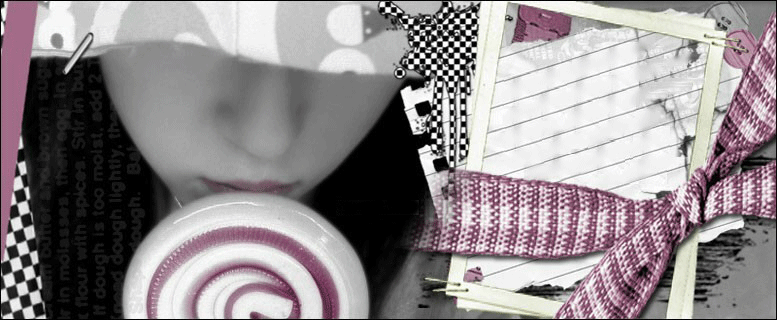The permanent molars occupy the most posterior portion of the dental arch. They have the largest occlusal surfaces of any of the teeth and have from three to five major cusps. Lower permanent molars always have two lingual cusps; upper permanent molars always have two buccal cusps. Lower molars have two roots; upper molars have three roots.
Molar teeth by definition are cheek teeth that are NOT preceded by primary teeth. Permanent molars are accessional teeth without primary predecessors. In contrast to the molars, permanent incisors, canines and premolars are succedaneous (successional teeth). Primitive mammals had three molars per quadrant. Humans and most primates retain that number. In humans, these teeth are important in chewing and maintaining the vertical dimension.
Maxillary First Permanent Molar Facial: The mesiobuccal and distobuccal cusps dominate the facial outline. They are separated by the buccal developmental groove. All three roots are visible. The buccal roots present a 'plier handle' appearance with the large lingual root centered between them.
Lingual: Two cusps of unequal size dominate the occlusal profile. The cusps are separated by the lingual developmental groove which is continuous with the distolingual (or distal oblique) groove. The larger mesiolingual cusp often displays the Carabelli trait. It is a variable feature. It appears most often as a cusp of variable size, but is occasionally expressed merely as a pit.
Proximal: In mesial perspective the mesiolingual cusp, mesial marginal ridge, and mesiobuccal cusp comprise the occlusal outline. When present, the Carabelli trait is seen in this view. In its distal aspect, the two distal cusps are clearly seen; however, the distal marginal ridge is somewhat shorter than the mesial one. A small concavity on the distal surface that continues onto the distobuccal root is occasionally described.
Occlusal: The tooth outline is somewhat rhomboidal with four distinct cusps. The cusp order according to size is: mesiolingual, mesiobuccal, distobuccal and distolingual. The tips of the mesiolingual, mesiobuccal and distobuccal cusps form the trigon, reflecting the evolutionary origins of the maxillary molar. The distolingual cusp is called the talon (heel) and is a more recent acquisition in evolutionary history. A frequent feature of maxillary molars is the Carabelli trait located on the mesiolingual cusp.
Contact Points and Height of Curvature: The mesial contact is above, but close to, the mesial marginal ridge. It is somewhat buccal to the center of the crown mesiodistally. The distal contact is similarly above the distal marginal ridge but is centered buccolingually.
Right and Left: The large mesiolingual cusp, single large lingual (palatal) root and Carabelli trait make distinguishing right and left easy.
Roots: There are three roots: two buccal and one lingual. The lingual root is the longest and is often described as 'banana shaped.' The mesiobuccal root is not as long; the distobuccal is the smallest of the three. Observe that the sequence of diminishing root size corresponds to the sequence of diminishing cusp size described above.
Variation: Deviation from the accepted normal is infrequent. The Carabelli trait is a variable feature. It is of special interest to the dental anthropologist in tracing human evolutionary history.
Maxillary Second Permanent Molar Facial: The crown is shorter occluso-cervically and narrower mesiodistally when compared to the first molar. The distobuccal cusp is visibly smaller than the mesiobuccal cusp. The two buccal roots are more nearly parallel. The roots are more parallel; the apex of the mesial root is on line with the with the buccal developmental groove. Mesial and distal roots tend to be about the same length.
Lingual: The distolingual cusp is smaller than the mesiolingual cusp. The Carabelli trait is absent.
Proximal: The crown is shorter than the first molar and the palatal root has less diverence. The roots tend to remain within the crown profile.
Occlusal: The distolingual cusp is smaller on the second than on the first molar. When it is much reduced in size, the crown outline is described as 'heart-shaped.' The Carabelli trait is usually absent. The order of cusp size, largest to smallest, is the same as the first but is more exaggerated: mesiolingual, mesiobuccal, distobuccal and distolingual.
Contact Points and Height of Curvature: Both mesial and distal contacts tend to be centered buccolingually below the marginal ridges. Since the molars become shorter, moving from first to this molar, the contacts tend to appear more toward the center of the proximal surfaces.
Right and Left: The large mesiolingual cusp, small distolingual cusp and the three roots make distinguishing right and left easy.
Roots: There are three roots: two buccal and one lingual. The roots are less divergent than the first with their apices usually falling within the crown profile. The buccal roots tend to incline to the distal.
Variation: The distolingual cusp is the most variable feature of this tooth. When it is large, the occlusal is somewhat rhomboidal; when reduced in size the crown is described as triangual or 'heart-shaped.' At times, the root may be fused.
Maxillary Third Permanent Molar Special Note: Maxillary and mandibular third molars show more developmental variation that any of the other permanent teeth. They are the teeth most often congenitally missing.
Facial: The crown is usually shorter in both axial and mesiodistal dimensions. Two buccal roots are present, but in most cases they are fused. The mesial buccal cusp is larger than the distal buccal cusp.
Lingual: In most thirds, there is just one large lingual cusp. In some cases there is a poorly developed distolingual cusp and a lingual groove. The lingual root is often fused to the to buccal cusps.
Proximal: The outline of the crown is rounded; it is often described as bulbous in dental literature. Technically, the mesial surface is the only 'proximal' surface. The distal surface does not contact another tooth.
Occlusal: The crown of this tooth is the smallest of the maxillary molars. The first molar is the largest in the series. The outline of the occlusal surface can be described as heart-shaped. The mesial lingual cusp is the largest, the mesial buccal is second in size, and the distal buccal cusp is the smallest.
Contact Points and Height of Curvature: This tooth is rounded and variable in shape. The distal surface has no contact with any other tooth.
Right and Left: Although this tooth is a variable and anomalous tooth, right and left is fairly easy to determine. The mesiobuccal cusp is much larger than the distobuccal cusp. This helps in the determination of right and left.
Roots: There are three roots: two buccal and one lingual. However, they are usually fused into one functional root.
Variation: They are the most variable teeth in the dentition. Impaction occurs frequently. Some resemble the adjacent second molar; others may have many cusps, small 'cusplets' and many grooves.
Mandibular First Permanent Molar Facial: The lower first permanent molar has the widest mesiodistal diameter of all of the molar teeth. Three cusps separated by developmental grooves make on the occlusal outline seen in this view. Moving from mesial to distal, these features form the occlusal outline as follows: mesiobuccal cusp, mesiobuccal developmental groove, distobuccal cusp, distobuccal developmental groove and the distal cusp. The mesiobuccal cusp is usually the widest of the cusps. The mesiobuccal cusp is generally considered the largest of the five cusps. The distal cusp is smaller than any of the buccal cusps and it contributes little to the buccal surface. The two roots of this tooth are clearly seen. The distal root is usually less curved than the mesial root.
Lingual: Three cusps make up the occlusal profile in this view: the mesiolingual, the distolingual and the distal cusp, which is somewhat lower in profile. The mesiobuccal cusp is usually the widest and highest of the three. A short lingual developmental groove separates the two lingual cusps.
Proximal: The distinctive height of curvature seen in the cervical third of the buccal surface is called the cervical ridge. The mesial surface may be flat or concave in its cervical third. It is highly convex in its middle and occlusal thirds. The occlusal profile is marked by the mesiobuccal cusp, mesiolingual cusp and the mesial marginal ridge that connects them. The mesial root is the broadest buccolingually of any of the lower molar roots. The distal surface of the crown is narrower buccolingually than the mesial surface. Three cusps are seen from the distal aspect: the distobuccal cusp, the distal cusp, and the distolingual cusp.
Occlusal: This tooth presents a pentagonal 'home plate' occlusal outline that is distinctive for this tooth. There are five cusps. Of them, the mesiobuccal cusp is the largest, and the distal cusp is the smallest. The two buccal grooves and the single lingual groove form the "Y5" pattern distinctive for this tooth. The five cusp and "Y5" pattern is important in dental anthropology.
Contact Points and Height of Curvature: The mesial contact is centered buccolingually just below the marginal ridge. The distal contact is centered over the distal root, but is buccal to the center point of the distal marginal ridge.
Right and Left: The cervical ridge on the buccal aspect, the two buccal cusps located to the buccal along with the distal cusp provide identification of the buccal aspect. The distal cusp is the smallest and is displaced along the occlusal aspect. These features make possible identification of right and left.
Roots: Lower molars have mesial and distal roots. In the first molar, the mesial root is the largest. It has a distal curvature. The distal root has little curvature and projects distally.
Variation: Most lower first molars have five cusps. Occasionally the distal cusp is missing. More rarely, in large molars, the distal cusp is joined by a sixth cusp, the 'cusp six' or tuberculum sextum. Two mesial roots are seen on occasion; this Sinodont feature is occasionally seen clinically, particularly in persons of North American Indian heritage.
Mandibular Second Molar Facial: When compared to the first molar, the second molar crown is shorter both mesiodistally and from the cervix to the occlusal surface. The two well-developed buccal cusps form the occlusal outline. There is no distal cusp as on the first molar. A buccal developmental groove appears between the buccal cusps and passes midway down the buccal surface toward the cervix.
Lingual: The crown is shorter than that of the first molar. The occlusal outline is formed by the mesiolingual and distolingal cusps.
Proximal: The mesial profile resembles that of the first molar. The distal profile is formed by the distobuccal cusp, distal marginal ridge and the distolingual cusp. Unlike the first molar, there is no distal fifth cusp.
Occlusal: There are four well-developed cusps with developmental grooves that meet at a right angle to form the distinctive "+4" pattern characteristic of this tooth.
Contact Points and Height of Curvature: When moving distally from first to third molar, the proximal surfaces become progressively more rounded. The net effect is to displace the contact area cervically and away from the crest of the marginal ridges.
Right and Left: When viewed occlusally, there is a distinctive prominence of enamel at the mesiobuccal -- a feature shared with first deciduous molars. Examined from the mesial or distal, the lingual surface has its height of curvature midway between the occlusal and the cervical line. On the buccal surface, the height of curvature is at the gingival third -- near the cervical line.
Roots: There are two roots which are often shorter than those of the first. When compared to first molar roots, those of the second tend to be more parallel and to have a more distal inclination.
Variation: Morphologically this is a stable tooth. Five-cusp versions are seen on occasion; however, root variability is greater than in the first molar.
Mandibular Third Molar Facial: The crown is often short and has a rounded outline.
Lingual: Similarly, the crown is short and the crown is bulbous.
Proximal: Mesially and distally, this tooth resembles the first and second molars. The crown of the third molar, however, is shorter than either of the other molars. Technically, only the mesial surface is a 'proximal' surface.
Occlusal: Four or five cusps may be present. This surface can be a good copy of the first or second molar, or poorly developed with many accessory grooves. The occlusal outline is often ovoid and the occlusal surface is constricted. Occasionally, the surface has so many grooves that it is described as crenulated -- a condition seen in the great apes.
Contact Points and Height of Curvature: The rounded mesial surface has its contact area more cervical than any other lower molar. There is no tooth distal to the third molar.
Right and Left: In the five cusp version, the buccal side of the tooth is easily identified. This can be confirmed by comparison with the lingual and buccal surface contours. In four cusp versions, the mesial cusps are usually more developed than the distal cusps, contributing to this tooth's ovoid occlusal profile.
Roots: The two roots are usually short, often curved distally, and poorly developed.
Variation: This is an extremely variable tooth and on occasion it is missing. While the most common anomaly of upper third molars is that they are undersized, lower third molars can be undersized or oversized. Lower third molars fail to erupt in many persons.




